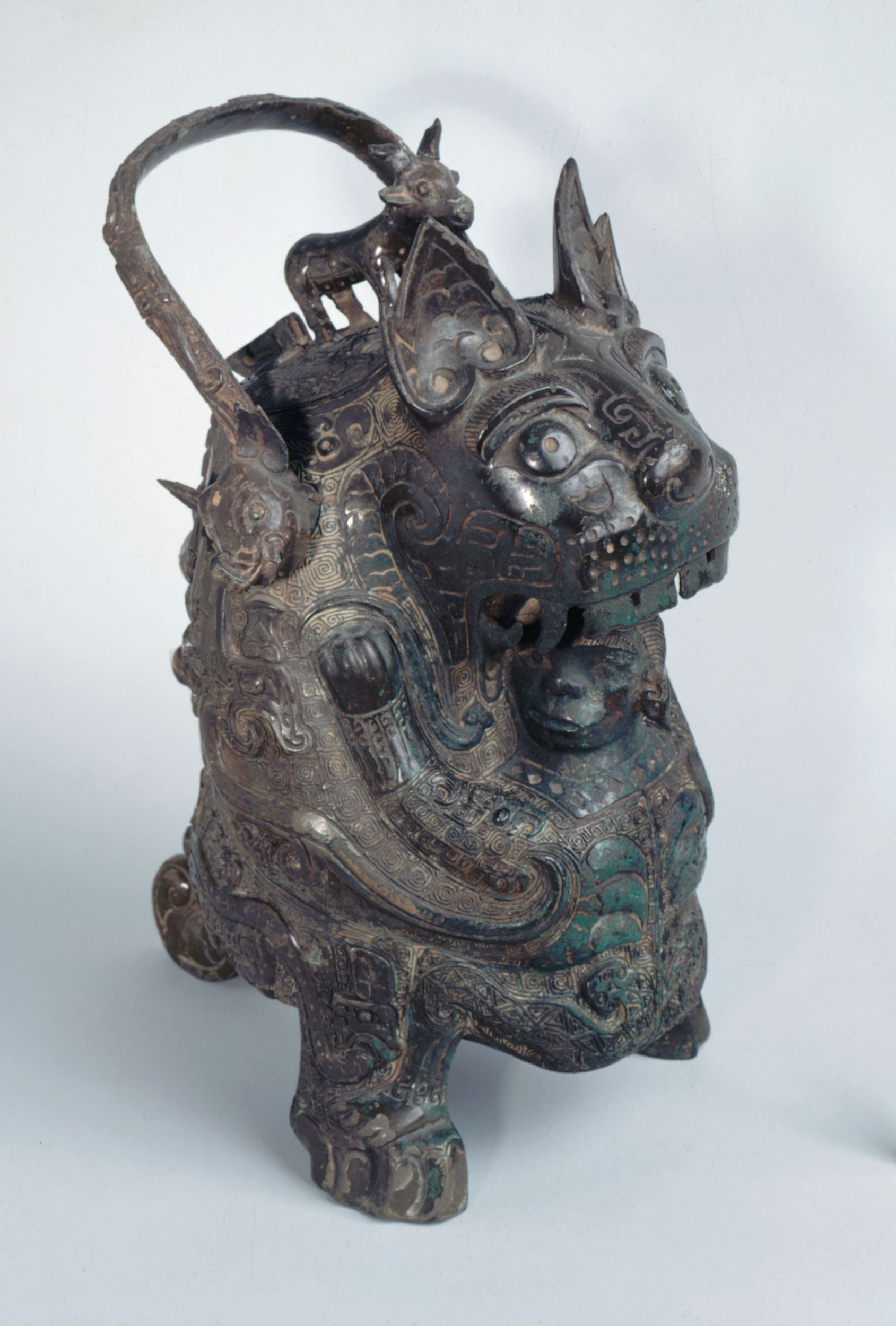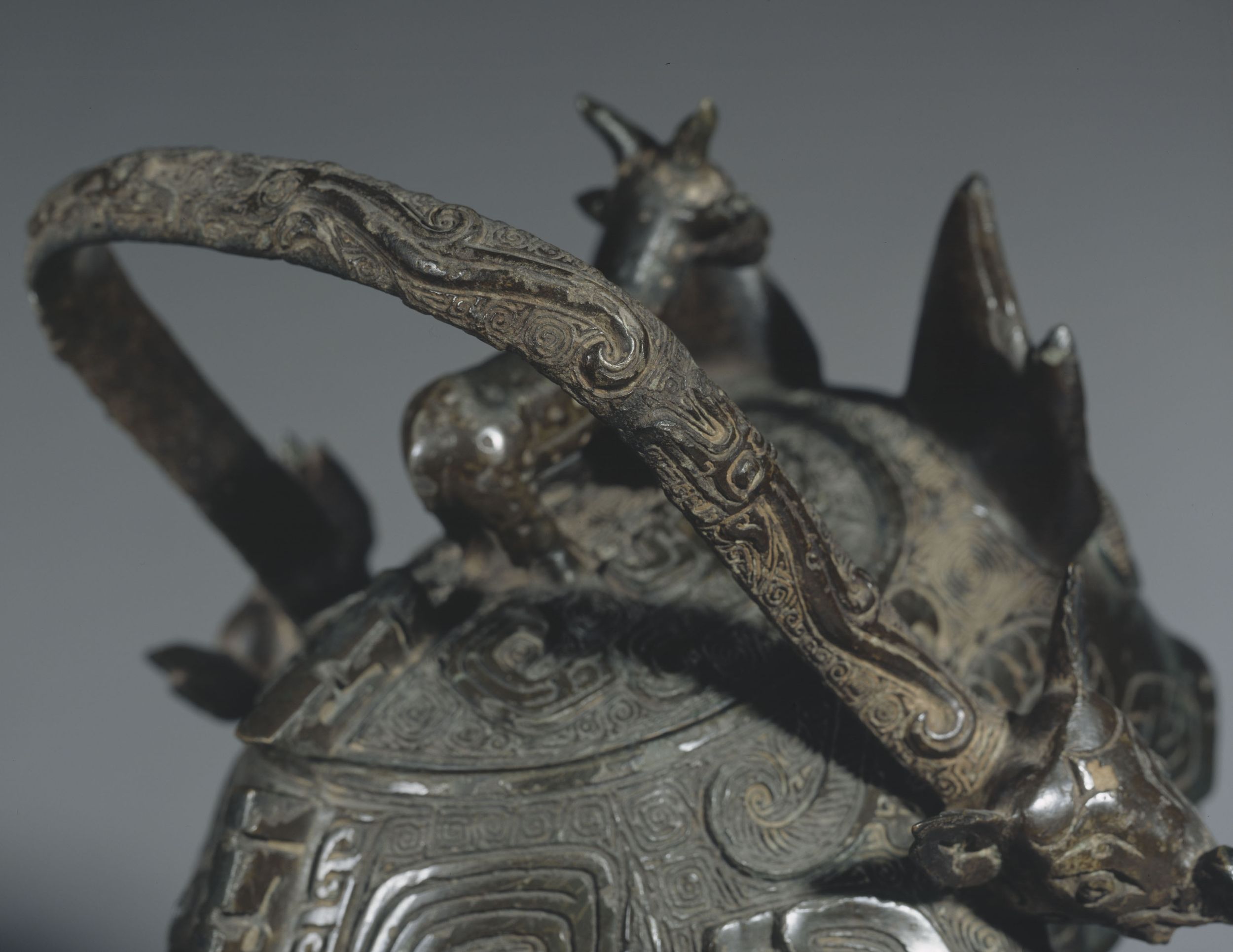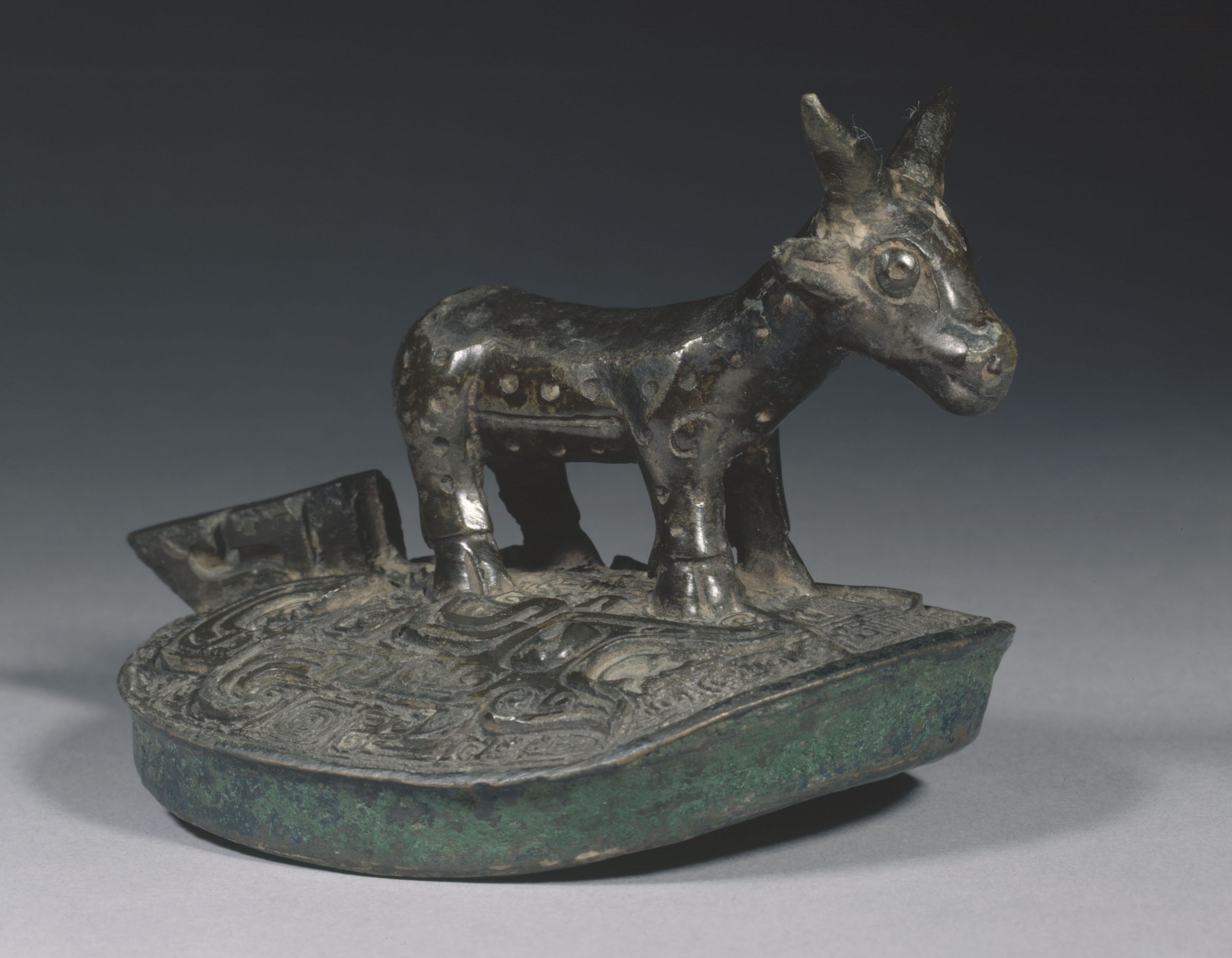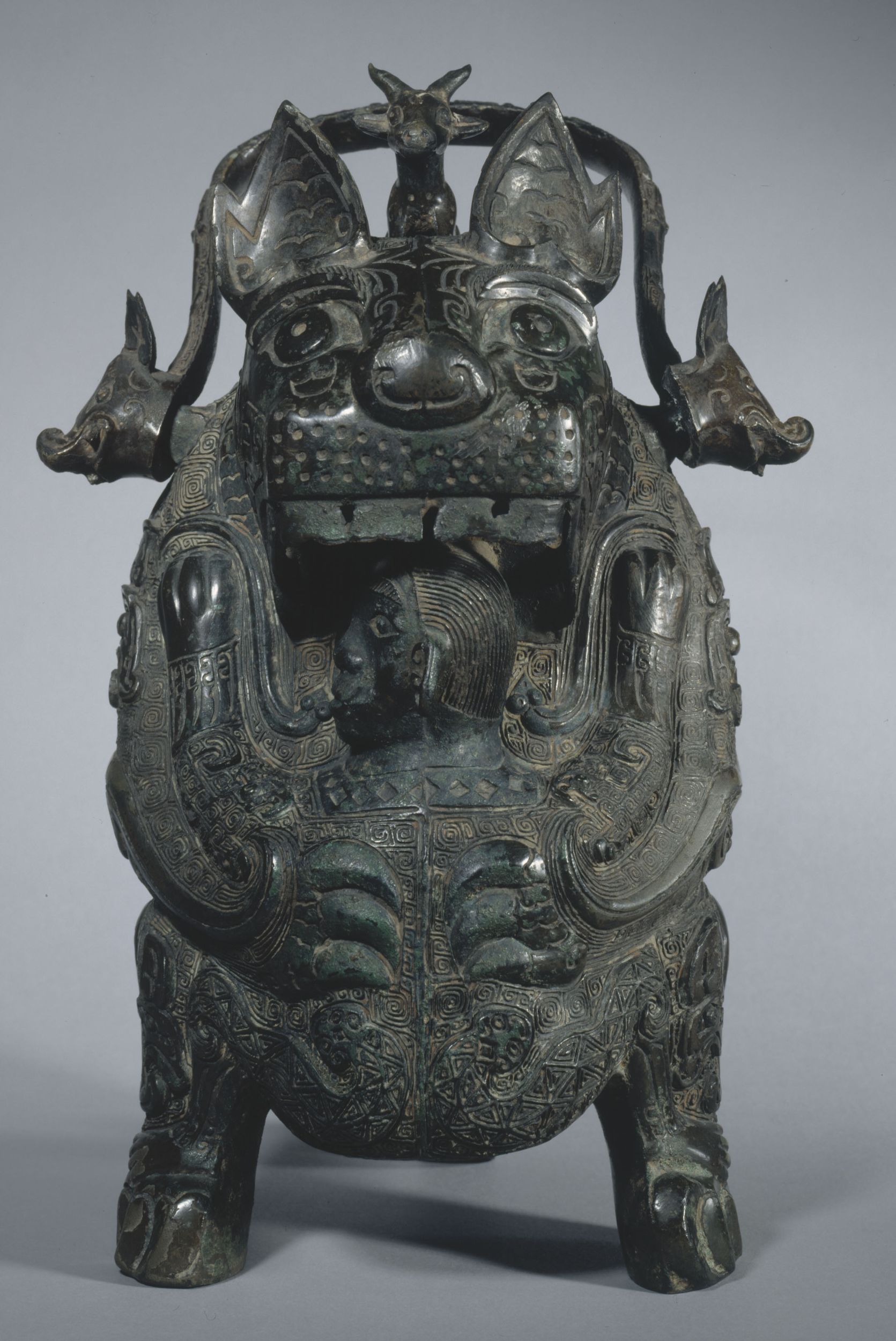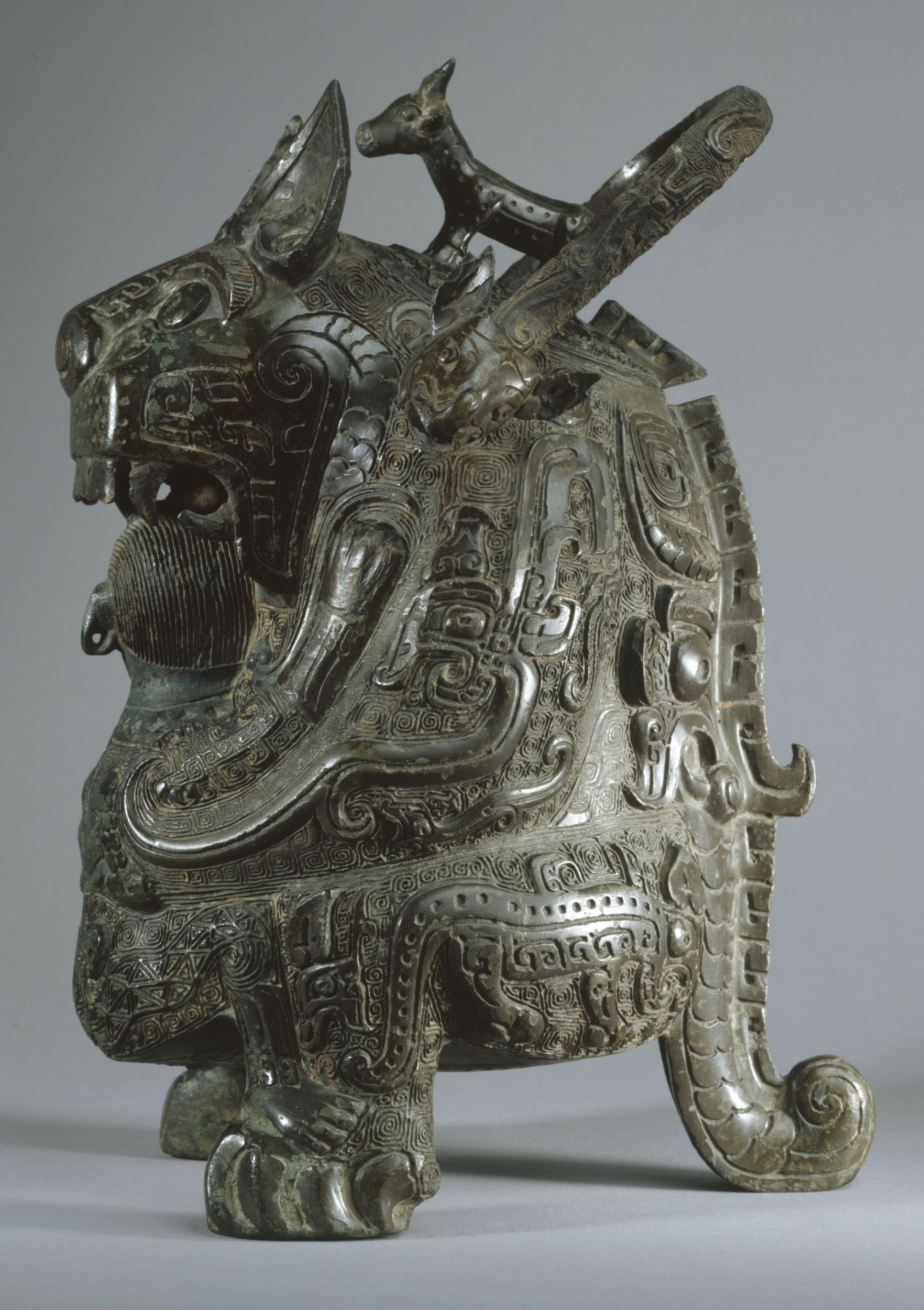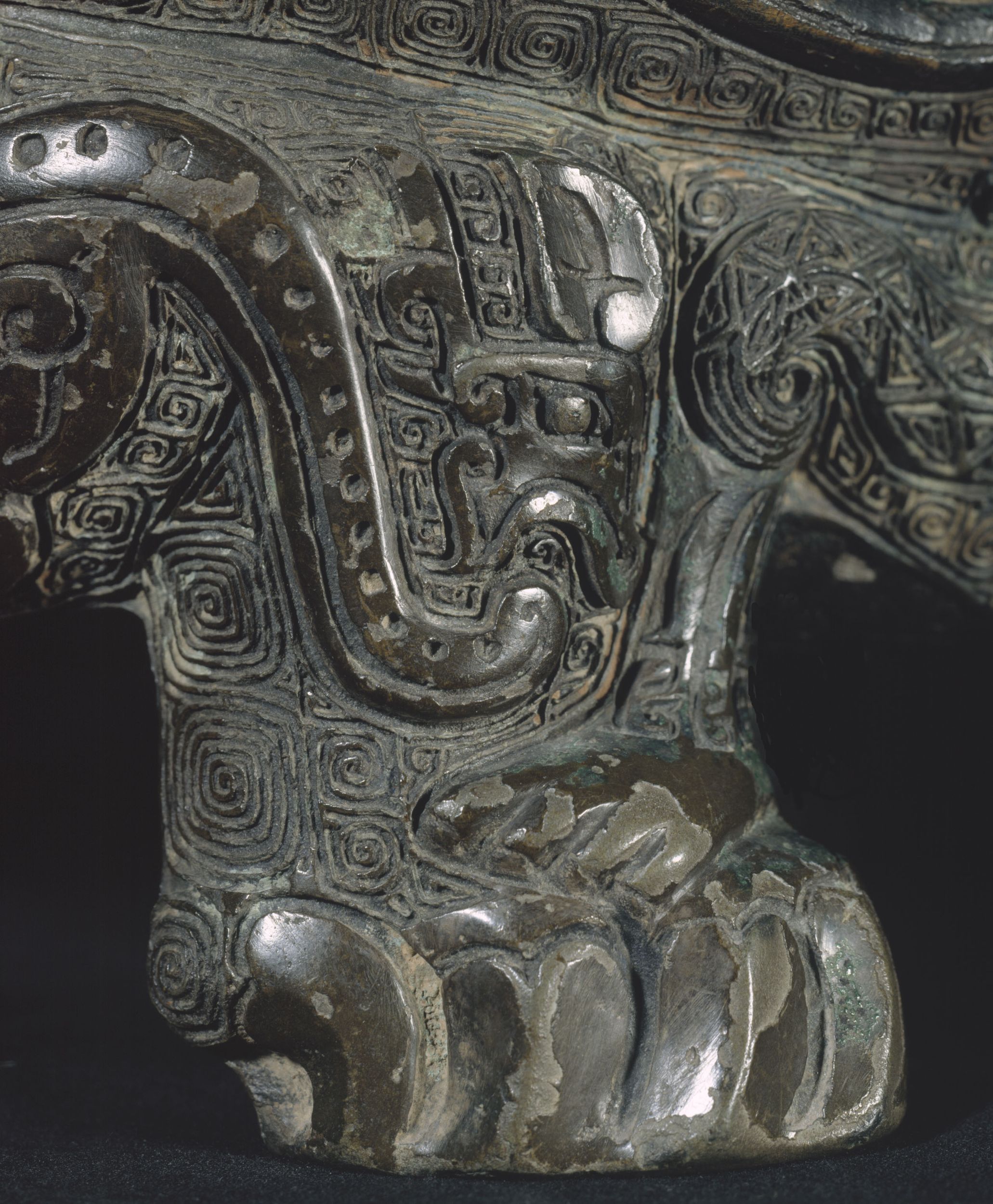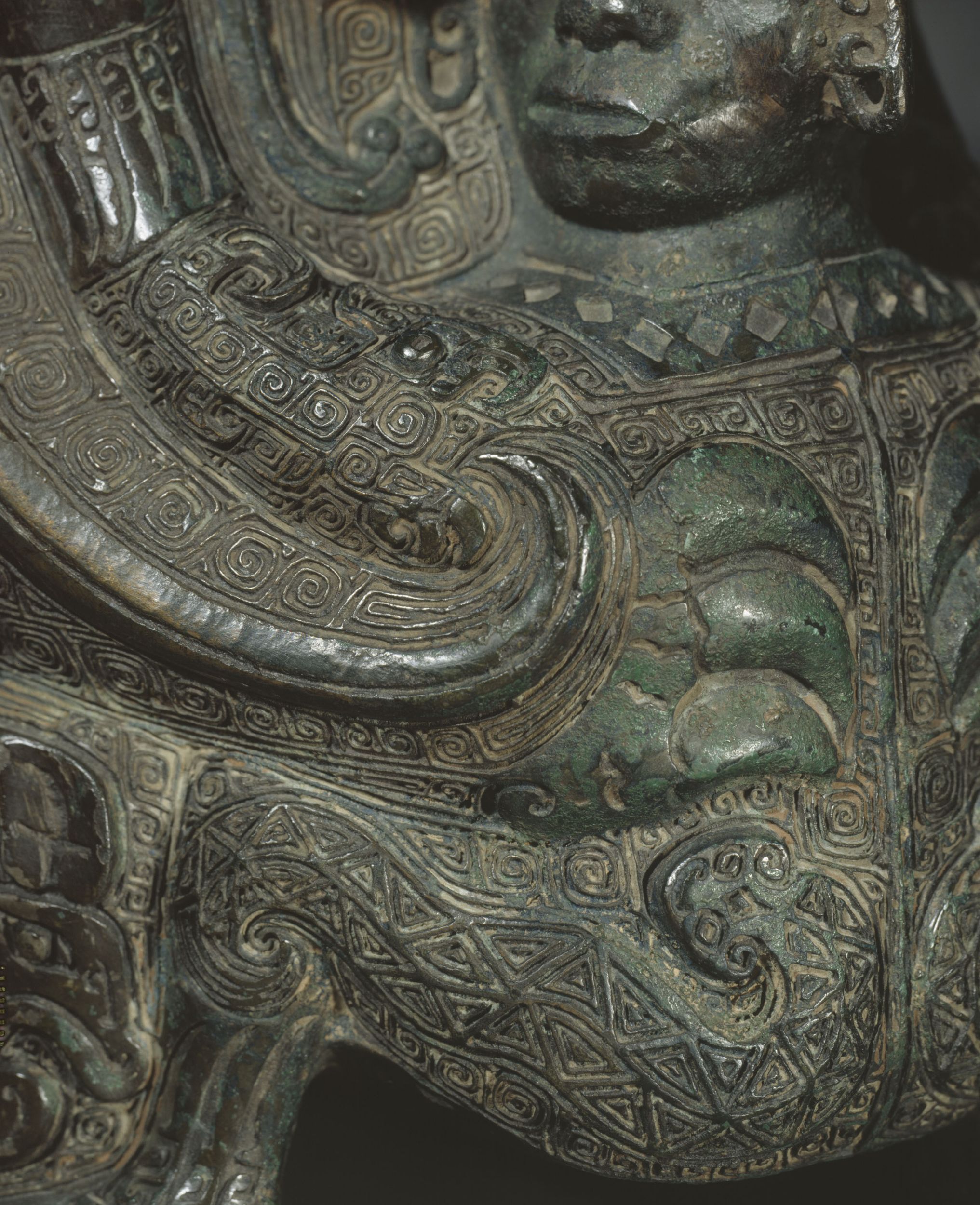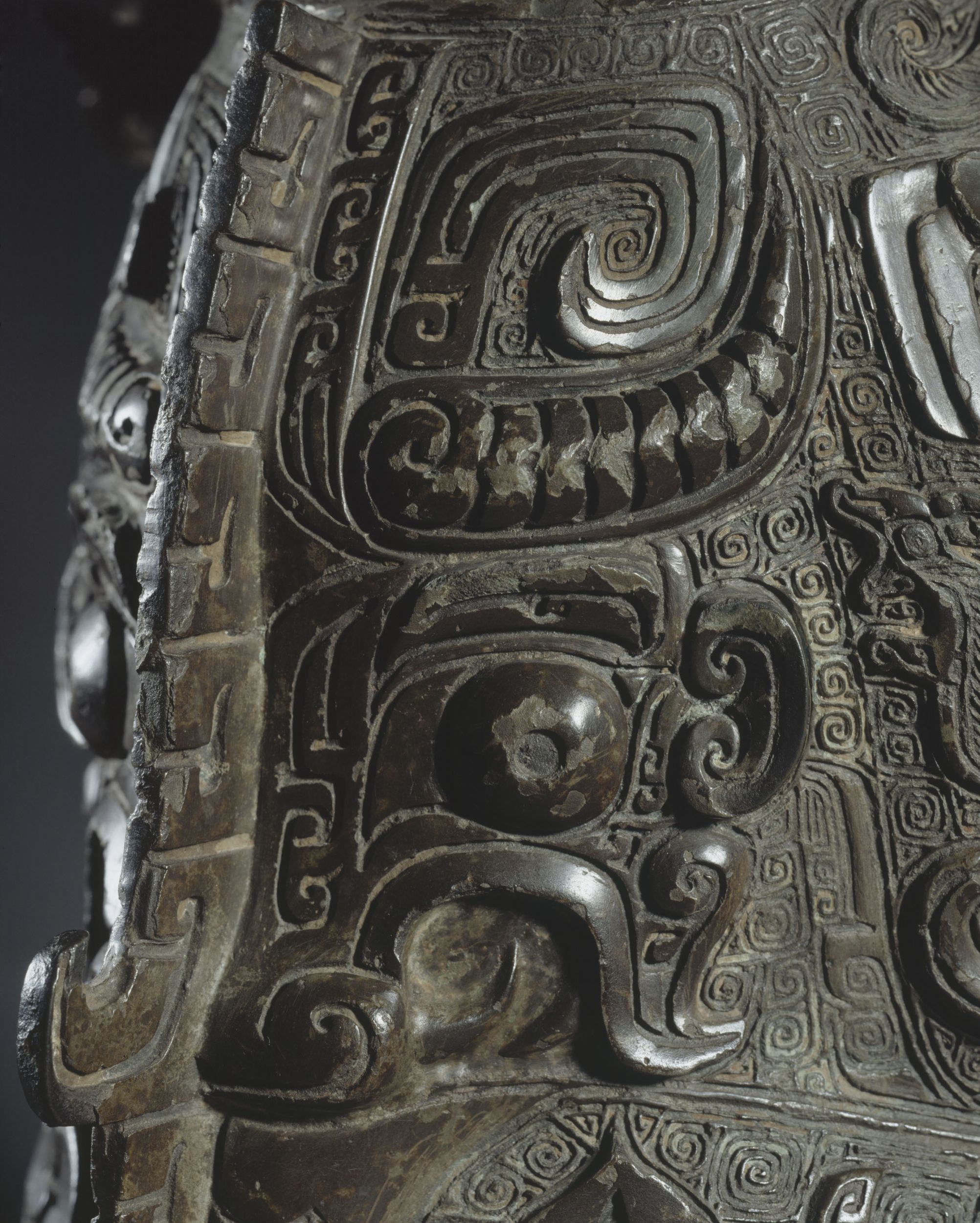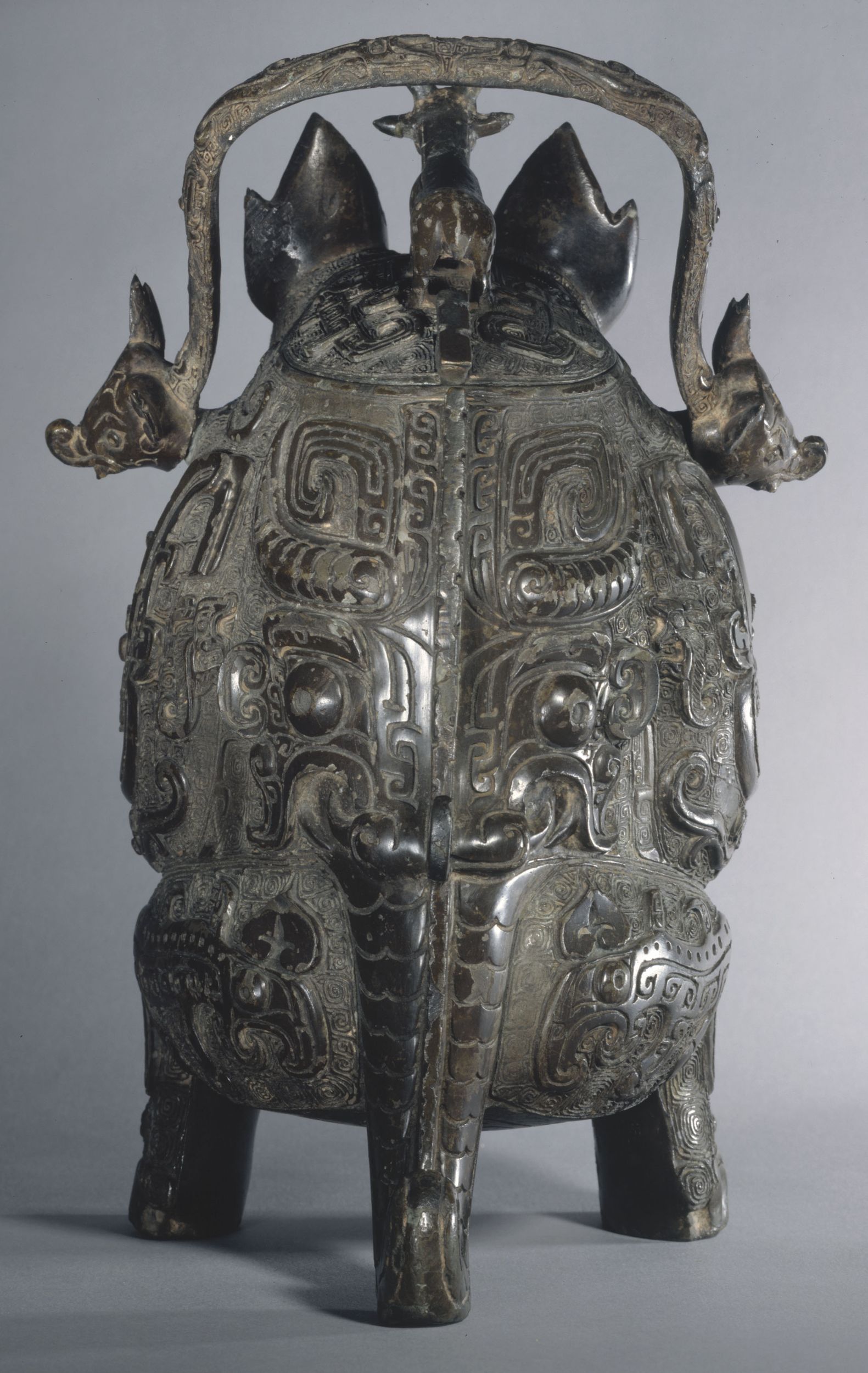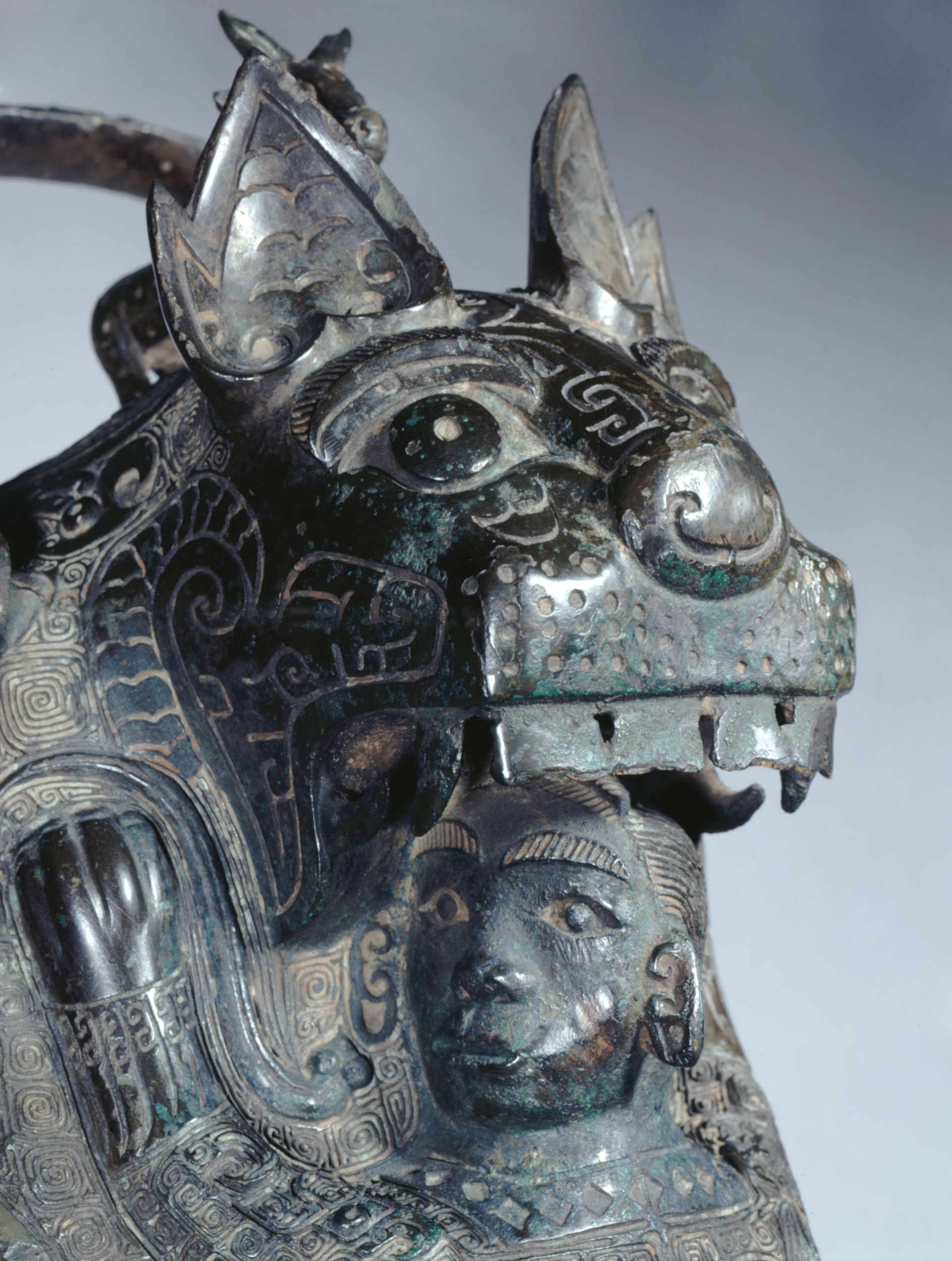
La Tigresse (vase you 卣)
Bronze, Fonte, Fonte au moule
Vaisselle et ustensile de cuisine, Vase, Objet religieux
Achat en vente publique
M.C. 6155
This you, designed to contain fermented beverages, is indisputably the most famous work of the Cernuschi Museum. The piece rests on the animal’s two hind legs and the curled tip of its tail. The open-mouthed feline clutches in its paws a small human being nestling against it. The elaborate decorations of large animal motifs, including many kui-type dragons, stand out over a ground of square spirals, characteristic of the late Shang era. The back of the animal, in the form of an elephant’s head, is particularly majestic. A horned goat with outspread ears, stands atop the the lid. The vessel’s handle is placed behind animal masks with pointed ears and a curved trunk.
The archaeological context of this piece’s discovery is unknown. However, according to oral tradition, it originated in Hunan, at the foot of the Weishan mountain on the border between the Anhua and Ningxiang counties, west of Changsha. Two features make this “southern” provenance plausible. The dark green, almost black bronze has a brilliance that the vessels of the old literati collections do not. But this is the appearance of pieces whose discovery in Hunan province is undisputed. The zoomorphic you also appears to have been another characteristic of wares produced in this province independent from the Shang kingdom further north. Several centuries later, in the Chu kingdom period (9th century - 223 BC), the cultural specificities of this region would be even more pronounced.
The theme of a feline and human, although recorded in the Shang kingdom, is more common in the south. It may be related to a tradition recorded in the Zuozhuan, an ancient commentary on the Spring and Autumn Annals (8th-5th centuries BC), which describes how the grandson of Ruoao, from the kingdom of Chu, by the name of Ziwen, was adopted and fed by a tigress when he was a child. The serene expression of the figure with his feet placed trustfully on the feline’s paws would support this form of explanation. Legends such as this echo the totemic accounts accompanying the founding of numerous aristocratic clans, where man and beast form a protective relationship, or through sexual union give birth to a mythical ancestor. It has been impossible to identify this unusual iconography, however, and the alternative theory that it represents the sacrifice of a child slave, symbolising evil, cannot be entirely dismissed.
